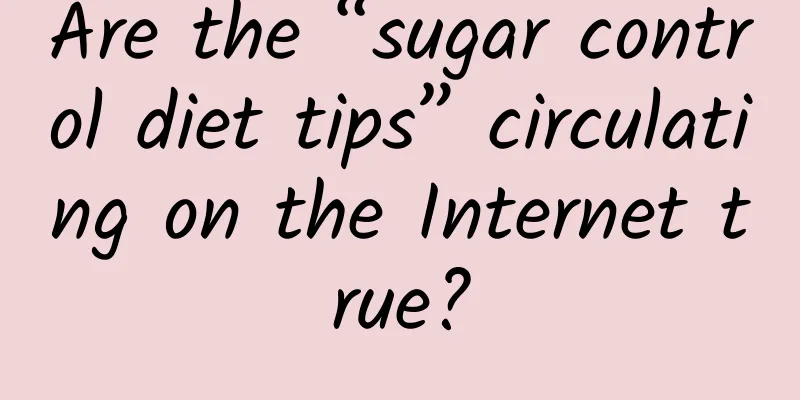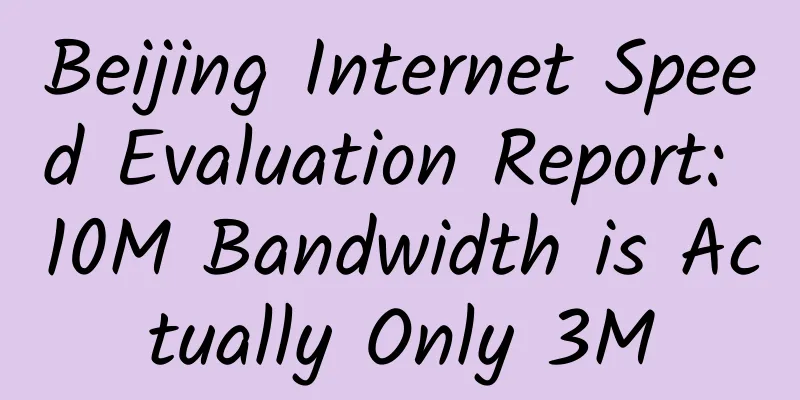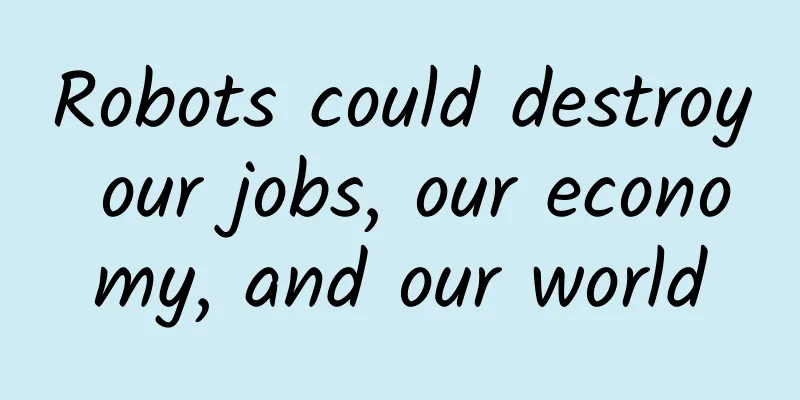Are the “sugar control diet tips” circulating on the Internet true?

|
Author: Wang Lu, registered nutritionist in China Review丨Ruan Guangfeng, Deputy Director of Kexin Food and Health Information Exchange Center gossip In recent years, the incidence of impaired glucose tolerance, hyperglycemia, diabetes, etc. has increased year by year. More and more people have begun to worry about their "blood sugar". Various "sugar control diet tips" have begun to circulate on the Internet - such as "eating hard food instead of soft food can effectively control blood sugar". Are these true? The so-called "eat hard food and not soft food" means giving priority to foods with relatively dry and hard texture, and eating less soft and sticky foods. So, does this sugar control technique really work? Let’s talk about it in detail today. analyze "Hard work, not soft work" is true Can you control blood sugar? Let me first say the conclusion: The advice of "eating hard food instead of soft food" does make some sense, because the rate at which blood sugar rises after a meal is related to the texture of the food. Compared with soft, mushy, sticky and high-water content foods, dry, hard, rough and low-water content foods are relatively difficult to chew into a paste, and are not as easy to digest. Since they are digested slowly, the speed at which they are broken down into glucose and enter the bloodstream to cause blood sugar to rise is also slow, and the post-meal blood sugar fluctuations are smaller, which is naturally more conducive to maintaining stable blood sugar levels. For those with poor blood sugar control and diabetes, it is better to choose relatively dry and hard foods and eat less soft and sticky foods when eating, which is more conducive to maintaining stable blood sugar after meals. For example, eat more chewy steamed bread and less soft white bread; eat more hard and chewy noodles and less noodles that are cooked until soft and melt in the mouth, etc. It should be noted that the "hard and dry" and "soft and mushy" mentioned here refer to staple foods with starch as the main ingredient in most cases. After all, the starch content in vegetables, fruits, meat, eggs, milk and beans is much lower than that in staple foods, and their "ability" to be directly converted into glucose in the body is much lower, and their impact on postprandial blood sugar is also smaller than that of starchy staple foods. Copyrighted stock images, no reproduction is authorized Is it enough to “take on the hard side but not the soft side”? Let me give you the answer first: "Eating hard food but not soft food" can indeed be a rough way to control blood sugar, but for patients with diabetes, hyperglycemia, and friends with poor gastrointestinal digestion function, only looking at this aspect is not comprehensive enough and may lead to misjudgment. This is because in addition to the hardness and softness of the food, the main ingredients of the food (the sugar content of the food itself), the rawness and doneness of the food, the degree and method of processing the food, the temperature of the food, the tissue structure of the food itself and other factors will affect the body's blood sugar level after a meal: ① The more starch and added sugar a food contains, the more likely it is to cause a rapid rise in blood sugar after a meal. For example, even hard brown rice has a higher glycemic index than soft steamed sweet potatoes. The former has a glycemic index of 68, while the latter has a glycemic index of 51. ② The rawer the food, the harder it is to digest and the lower the glycemic index. Conversely, the more cooked the food, the easier it is to digest and the higher the glycemic index. The judgment of rawness and ripeness includes both the degree of natural ripeness and the degree of cooking. For example, the glycemic index of raw bananas is 30, while the glycemic index of ripe bananas is 52. ③The higher the degree of food processing and the more refined it is, the easier it is to digest and the higher its glycemic index . The lower the degree of processing, the lower the glycemic index. For example, the glycemic index of instant oatmeal is 79, while the glycemic index of flaked oatmeal that needs to be brewed with boiling water is 55. The way food is processed directly affects the degree of processing. For example, porridge cooked in a pressure cooker is often softer and stickier than porridge cooked in an ordinary pot, easier to digest, and has a higher glycemic index. ④Cold foods often have a lower glycemic index than hot foods. On the one hand, it is because hot foods are indeed more easily accepted by the gastrointestinal tract. On the other hand, cold starchy staples may contain a certain proportion of resistant starch, which is more difficult to digest and absorb. ⑤The structure of the food itself will also affect the glycemic index. The looser the food structure, the easier it is for digestive enzymes to access it, and then it is quickly digested and absorbed, increasing blood sugar, and the glycemic index will naturally be higher. If the food is compact and dense, it is not easy to digest and has a low glycemic index. For example, the glycemic index of unfermented steamed bread is 70, while the glycemic index of whole wheat steamed bread is 82. After understanding these, you will realize that judging whether a food is more conducive to blood sugar control only from the perspective of "hard" and "soft" is indeed not complete. It is also necessary to comprehensively consider the food's ingredients, degree of processing, rawness, doneness, temperature, etc. For example, the glycemic index of dry, flat, thick noodles made of wheat flour is 46, while the glycemic index of thin noodles made of durum wheat flour is 55. The glycemic index of thick noodles made of durum wheat flour with eggs is 49. The first two are caused by the different degrees of food processing, while the latter two are caused by the different main ingredients of food. This is why we use an objective and quantitative indicator, the "glycemic index", to measure the blood sugar fluctuations caused by eating a certain food. If you want to have a more comprehensive understanding of the impact of food on postprandial blood sugar, you might as well pay attention to its glycemic index and glycemic load. Copyrighted stock images, no reproduction is authorized In addition, "eating hard food but not soft food" is not suitable for patients with diabetes and hyperglycemia. It is also not suitable for people with poor gastrointestinal digestive function. For example, people with severe gastric ulcers should avoid foods that are too dry and hard to prevent mechanical stimulation of the gastric mucosa. For another example, some elderly people have reduced digestive function and should not eat a lot of dry and hard foods, otherwise they may cause other problems due to indigestion. Also, middle-aged and elderly people with bad teeth should avoid foods that are too hard to damage their teeth. Suitable for most people Tips for eating to control sugar levels scientifically So, are there any more scientific, suitable for more people, easy to use, easy to remember and easy to implement "scientific sugar control" eating tips? Of course there is! We have compiled 4 simple tips that you can use directly. You can use them flexibly. 1. There is no problem with the gastrointestinal tract. Eat more hard food and less soft food. There is no problem. 2. If you have poor gastrointestinal function or are not used to eating dry and hard food, then you should eat a variety of coarse foods instead of fine ones. For example, the types of food in one meal should be as diverse as possible, including vegetables, fruits, lean meat, eggs, staple foods, etc. The staple foods should be coarse grains rather than refined rice and white flour. 3. If you don’t have the conditions to diversify your food, or you are not used to eating too much whole grains, then you should pay attention to not processing the food too finely, and the food should not be too small or soft. For example, use ordinary pots to cook thin porridge with "soup and rice separation" instead of eating sticky porridge that melts in your mouth and you can't see the original appearance of the rice. 4. The order of eating is very helpful. First, drink soup/water, then vegetables and meat, and finally eat the staple food. If you still find the above principles complicated, you must remember to adjust the order of eating - first drink some light soup or water to occupy a certain stomach capacity, then eat vegetables rich in dietary fiber and not so easy to digest, then eat very "hunger-resistant" high-quality protein, such as meat and eggs, and finally eat staple foods that provide starch. This can minimize the intake of starchy staple foods. in conclusion The suggestion of "eat hard food instead of soft food" does make some sense, because the rate of blood sugar rise after a meal is related to the texture of the food. For people with poor blood sugar control and diabetes, when eating, they should give priority to relatively dry and hard food and eat less soft and sticky food, which is more conducive to maintaining stable blood sugar after a meal. However, judging whether a food is more conducive to blood sugar control only from the perspective of "hard" and "soft" is indeed not complete. It is also necessary to comprehensively consider the food's ingredients, degree of processing, rawness, doneness, temperature, etc. Source: Science Popularization China Planning丨Linlin, Yinuo Editor: Yinuo Editor|Liu Yantong (internship) The article is produced by Science Popularization China-Starry Sky Project. Please indicate the source when reprinting. The cover image and images within this article are from the copyright gallery. Reprinting and quoting them may lead to copyright disputes. |
<<: A new landmark in Antarctica! Qinling Station has a “Chinese style”
Recommend
Android phone fluency ranking: Xiaomi fifth, OnePlus first, where is Huawei?
As we all know, mobile phones are divided into tw...
Summary of the key points of the full text of the 2022 Government Work Report: There are mainly 26 key points!
At 9:00 a.m. on March 5, 2022, the opening meetin...
Data fraud black industry technical post: How to increase the traffic of WeChat public accounts, Weibo celebrities, and live broadcast influencers
If you only look at the fraudulent behavior of We...
Do brand marketing ads need conversions?
The dispute between brand advertising and perform...
Changhong's smart home application solutions are fully marketized to accelerate the pace of intelligent transformation
On June 7, the 2017 Asia Consumer Electronics Sho...
Due to too many bugs, Apple plans to make major changes to the development model of iOS 14
We thought that after the early versions of iOS 1...
The extraordinary existence in porcelain - Yongle and Xuande blue and white porcelain
Blue and white porcelain originated in the Tang D...
Oculus Rift will be available in the first quarter of this year
As a benchmark in the field of virtual reality, e...
VR is so popular, why doesn’t Nintendo touch it?
Recently, Nintendo's president, Mr. Satoru Iw...
Tonghua SEO training: how to statistically analyze website ranking data
Most of the monitoring of website ranking data is...
Hundreds of "smart volunteers" are on duty! Humanoid robots have become the "leaders" of conference affairs?
The 2025 Zhongguancun Forum Annual Meeting offici...
What should I do if my Tik Tok works are not recommended?
After the emergence of Kuaishou short video, shor...
Tsinghua Mom Parent Classroom (Parents of 2-year-olds to 1st graders)
Tsinghua Mom Parent Classroom (Parents of 2-year-...
Ruofeng Popularity Leader Special Training Camp, accurately grasp the popular leader's detonation point Baidu Cloud Download
Ruofeng Popularity Leader Special Training Camp, ...
There is a kind of romance in the universe, I am your companion star
Alien planetary system has a Jupiter world 99 tim...



![[Excellent Tutorial] Making an Archery Game with Cocos2d-x v3.6 (Part 2)](/upload/images/67ebe7f662754.webp)





